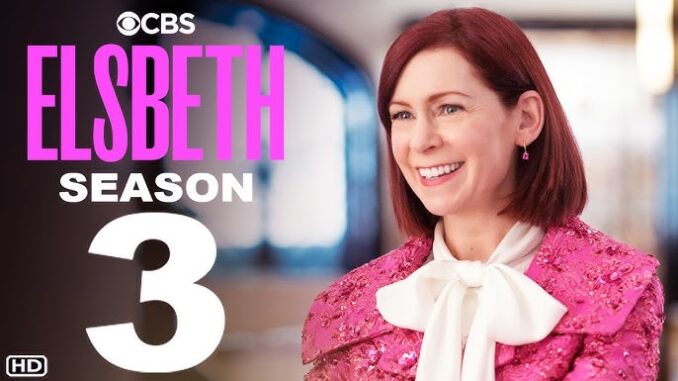
The Elsbeth Effect: How Cameos Elevate a Procedural with a Twist
Elsbeth Tascioni, the quirky, observant lawyer from "The Good Wife" and "The Good Fight," has always been a delightful outlier in the often-grim world of legal dramas. Now, with her own spin-off, "Elsbeth," she’s bringing her unique brand of perceptive chaos to the NYPD. And the recent announcement of a slew of guest stars for season 3, including the comedic powerhouses Stephen Colbert and Amy Sedaris, underscores a key element of the show's success: its ability to seamlessly integrate high-profile cameos that both enhance the narrative and amplify Elsbeth's captivating oddity.
"Elsbeth" isn't just another police procedural; it's a character study wrapped in a whodunit. While the core structure revolves around solving crimes, the true focus lies on Elsbeth's extraordinary ability to notice the details others miss, a skill honed by years of observing the intricate dance of power and deception in the courtroom. This inherent attentiveness allows the show to explore the nuances of human behavior, and guest appearances become more than just stunt casting; they offer opportunities to showcase Elsbeth's brilliance and to dissect compelling characters.
The announcement of Stephen Colbert and Amy Sedaris is particularly intriguing. Colbert, known for his sharp wit and political satire, brings a layer of intellectual heft and comedic timing that could inject a fascinating dynamic into the investigation. One can imagine Elsbeth, with her seemingly naive questions, drawing out veiled confessions from a character played by Colbert, cleverly using his own penchant for irony against him. Similarly, Amy Sedaris, the queen of offbeat humor and character acting, promises to bring a delightfully unpredictable energy to the show. Her eccentric roles, often bordering on the absurd, would provide fertile ground for Elsbeth to navigate, potentially revealing hidden motives or vulnerabilities beneath a veneer of quirky charm.
The effectiveness of these cameos hinges on the show's ability to integrate them naturally into the existing framework. Rather than simply dropping a famous face for the sake of boosting ratings, "Elsbeth" needs to utilize these guest stars to further develop its characters and explore its central themes. Imagine Sedaris playing a seemingly harmless antique dealer, whose collection of forgotten objects holds the key to a decades-old crime. Elsbeth, drawn to the overlooked and the unconventional, would be the perfect person to unravel the mystery, allowing Sedaris to shine while simultaneously highlighting Elsbeth's unique investigative style.
Furthermore, these guest stars can act as foils to Elsbeth, emphasizing her unconventional approach to crime-solving. In a world of meticulous procedures and hardened detectives, Elsbeth's intuition and empathy often seem out of place. By contrasting her methods with those of a more traditionally-minded character, perhaps one played by Colbert, the show can further explore the value of her perspective and the effectiveness of her unexpected strategies.
Ultimately, the success of "Elsbeth" lies in its ability to subvert expectations and embrace the unexpected. The addition of Stephen Colbert, Amy Sedaris, and other guest stars is not just a marketing ploy; it's an opportunity to enrich the narrative, deepen the character development, and further cement "Elsbeth" as a procedural with a distinct personality. By allowing these talented individuals to play within the show's unique framework, "Elsbeth" can continue to surprise and delight audiences, proving that even in the most formulaic of genres, there's always room for a little bit of delightful eccentricity. The "Elsbeth effect," therefore, is not just about attracting viewers with famous faces; it's about using those faces to illuminate the heart of the show: a celebration of observation, intuition, and the power of seeing the world through a slightly skewed lens.
